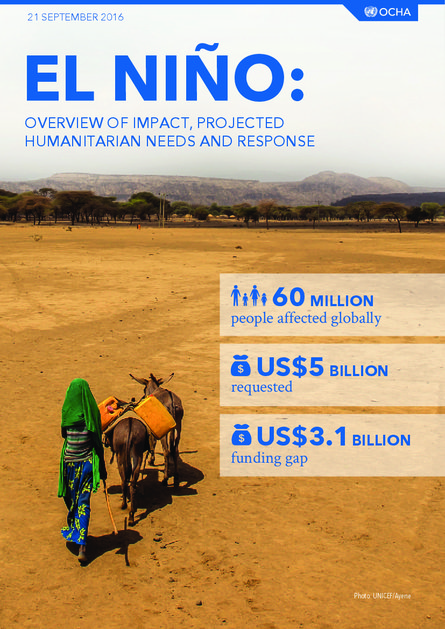
The El Niño weather event has been in a neutral phase since May. Nevertheless, it continues to have a devastating impact on vulnerable people in parts of Eastern and Southern Africa, Asia and the Pacific, the Dry Corridor in Central America, and Haiti in the Caribbean. This event will also cause long term consequences for public health, nutrition, livelihoods, water and sanitation.
The weather phenomenon has resulted in poor or failed harvests in Africa, the Pacific and Central America in mid-2016, and has forced millions of poor households to resort to negative coping mechanisms, such as reducing meal sizes and non-food expenditures and selling productive assets. Poor or failed harvests lower the food supply and drive up food prices putting more burden on vulnerable households who have already seen their income reduced from poor crop production, loss of livestock and lack of employment. Water scarcity has also triggered human and livestock migration, particularly in pastoral communities. While some areas have experienced poor harvests due to drought, El Niño has led to heavy rainfalls and flooding in other parts of East Africa, Asia and Latin America, which has damaged crops and further reduced food security. The drought and floods also contribute to the spread of water- and mosquito-borne diseases.